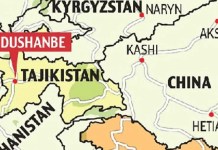Cyclone Yaas made landfall between Dhamra and Balasore in Odisha, India around 9 am on May 26. The severe cyclonic storm is expected to bring heavy rain in the coastal state and neighboring West Bengal.
This is the second cyclone to hit the country within a span of a fortnight. The western coast of India was hit by Cyclone Tauktae last week.
One of the strongest tropical cyclones to hit the western coast of India, it was also the strongest to make landfall in Gujarat since the 1998 Gujarat cyclone.
The name Yaas comes from the Persian language, which means jasmine flower. The cyclone has been named by Oman. Yaas has also become one of the most searched words on the internet and its meaning in Arabic is despair or desperation.
Tauktae (pronounced as Tau Te) means ‘Gecko’, a highly vocal lizard in the Burmese language. As evident, the cyclone was named by Myanmar.
Why Are Cyclones Named?
Generally, a cyclone with a speed of more than 34 nautical miles per hour is given a special name. The cyclones emerging in Asia are named by a special panel of 13 countries.
It includes India, Bangladesh, Myanmar, Pakistan, the Maldives, Oman, Sri Lanka, Thailand, Iran, Qatar, Saudi Arabia, the United Arab Emirates, and Yemen.
The cyclones are named so that Meteriologists can identify them quickly and effectively and send out timely warnings. Special care is taken to ensure that the names chosen do not hurt the sentiments of a country or culture.
Care is also taken to ensure that they do not conform to any gender, religion, culture or political identity. The name should be easy and short, and should not exceed eight letters.
Last year, these 13 countries came up with a list of 169 names for the cyclones. These names are used on a rotational basis.
VERY SEVERE CYCLONIC STORM YAAS CENTRED ABOUT 50 KM SOUTH-SOUTHEAST OF BALASORE.LANDFALL PROCESS HAS COMMENCED AROUND 0900 HRS IST. pic.twitter.com/esPuoaECL0
— India Meteorological Department (@Indiametdept) May 26, 2021
Cyclones Vs Hurricanes
While the Indian coasts are battered annually by cyclones, parts of the United States are inundated by hurricanes. So what is the difference between the two?
Cyclones, hurricanes or even typhoons are types of tropical storms. The difference lies in their places of origin. Hurricanes are tropical storms, which originate over the North Atlantic Ocean and Northeast Pacific.
Cyclonic storms originate over the South Pacific and the Indian Ocean, while Typhoons are those storms forming over the Northwest Pacific Ocean.
Prominent Cyclones & Hurricanes
In 2020, the east coast of India was battered by cyclone Amphan (pronounced as um-pun). It was named by Thailand, and means ‘sky’ in Thai language.
The cyclone that formed over the Arabian Sea in June 2020 was named Nisarga (meaning nature) by Bangladesh.
Cyclone Phailin (means sapphire in Thai), which hit Odisha in 2013, was named by Thailand.
Similarly, Cyclone Fani or Foni hit the east coast in 2019; The name Fani meaning ‘hood of a snake’ was coined by Bangladesh.
For naming hurricanes, the World Meteorological Organization has some strict guidelines.
For Atlantic hurricanes, a list of male and female names is used on a six-year rotation. The name of a hurricane is changed, if it causes huge devastations, as its future use is then deemed inappropriate.
The US used to give female names to identify storms, a practice that was changed in 1978. Since then, both male and female names have been used for hurricanes.
The decade 2000-2009 witnessed eight Category-5 hurricanes — Isabel (2003), Ivan (2004), Emily, Katrina, Rita and Wilma in 2005, Dean and Felix in 2007.




